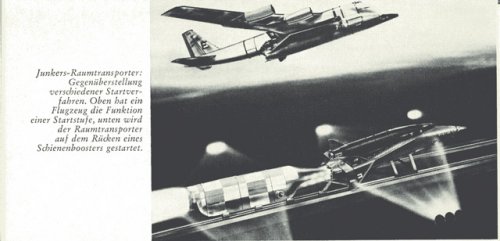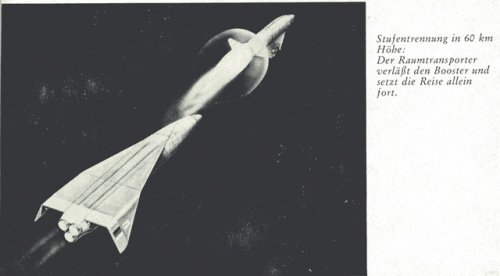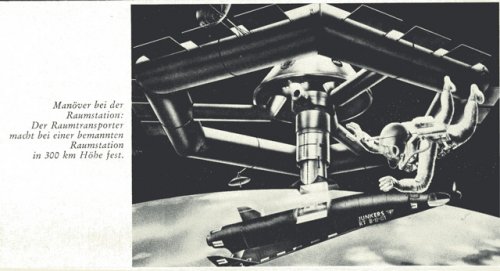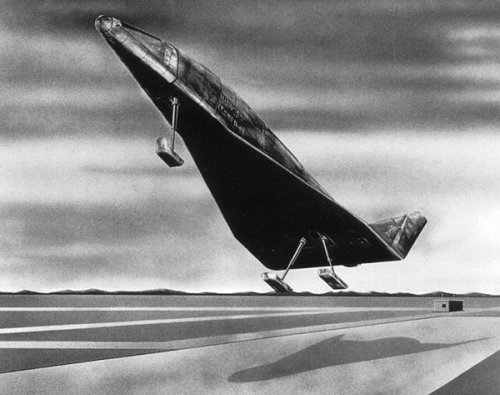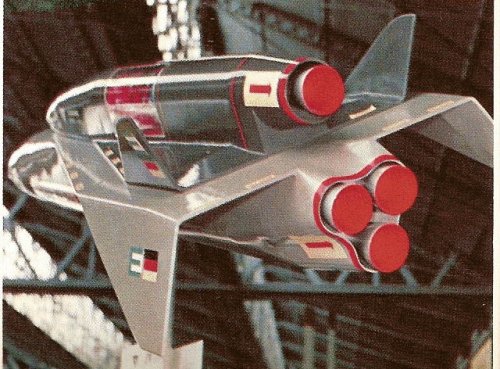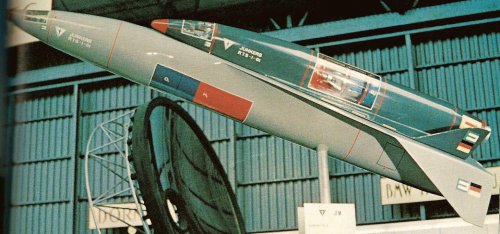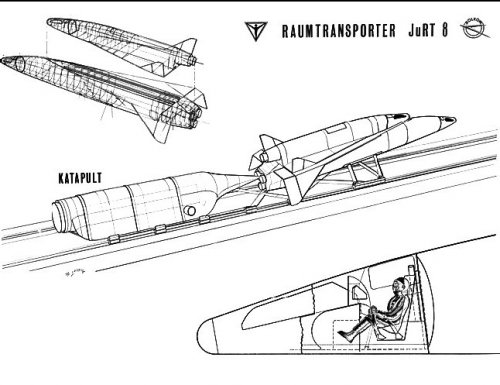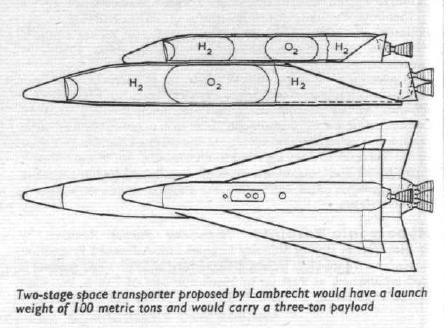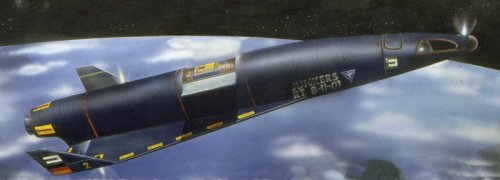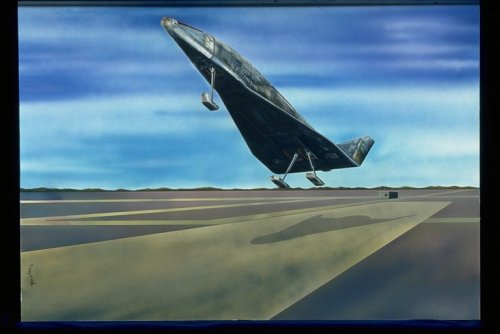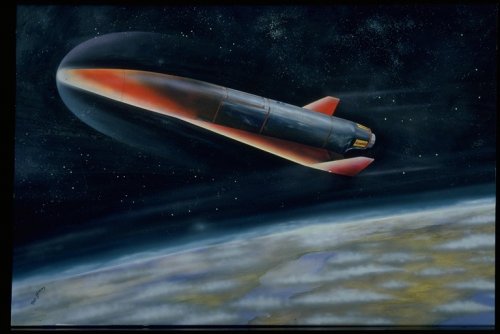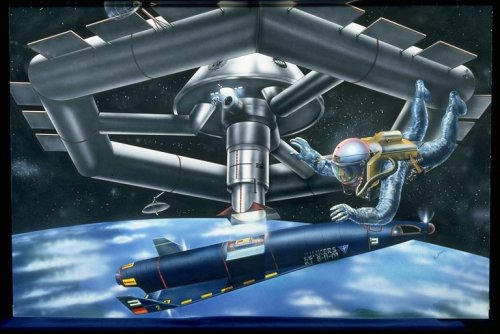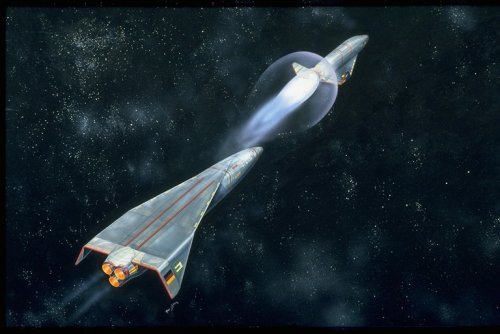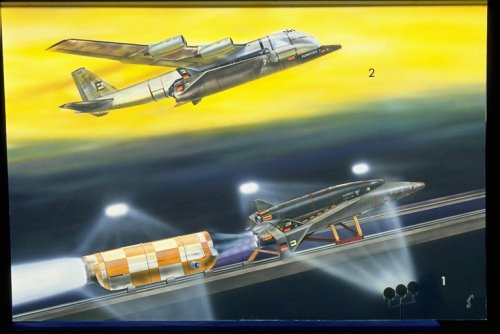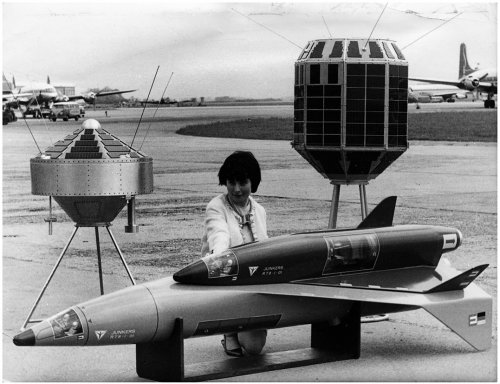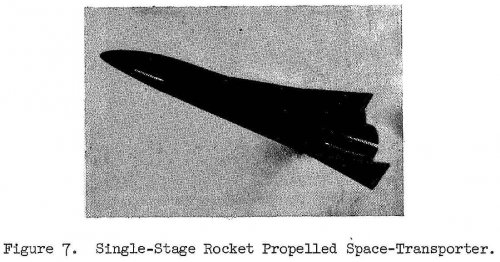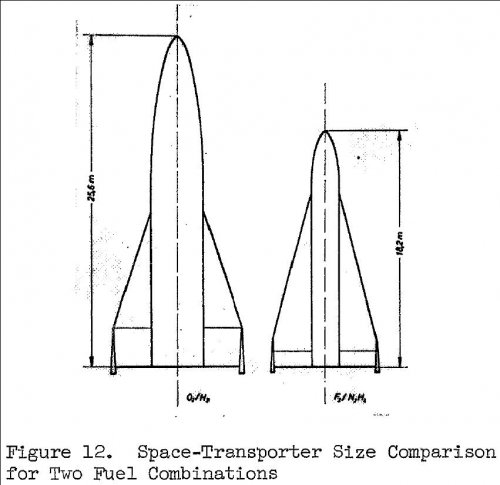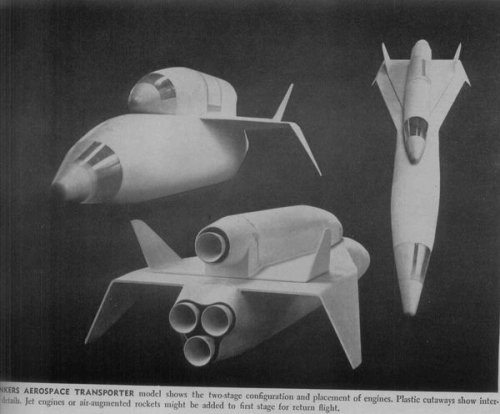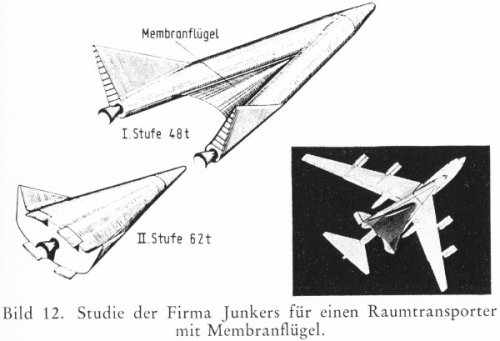- Joined
- 13 August 2007
- Messages
- 7,880
- Reaction score
- 9,007
In 1960 Eugen Sänger work for German Aerospace Company Junkers.
on basis of his Silbervögel, designing a Sled-Launched two stage space-plane
the "RT-8-01 Raumtransporter" later called Sänger I
July 1961 beginn of Project by Sänger
RT-1 to RT-7 never really existed as completed designs
JuRT-8-01 (Junkers Raum Transporter | german = Junkers Space Transporter )
concept
Launch like Silbervögel on sled
The RT-8 sled was powered by a steam rocket,
which propelled the first and second stages on a 3,2 km long track to a release velocity of 900 kph
or Launch like X-15 from a heavily-modified B-52 bomber ! (RT-8-01 weight 187 ton)
how Junkers want to Modify a B-52 is unclear. (with Boeing help ?)
Both the first and second stages were equipped with Lox/LH2 engines,
First stage 3 engines, Second stage one.
each with a sea-level thrust of 50 tonnes (in total 200 ton) and a specific impulse of 430 seconds.
like Shuttle has acceleration of 3 G
The first manned stage would take the second to a 60 km altitude at 150 seconds after liftoff before releasing it and then fly back to base. The first stage had a shoulder-mounted delta wing with drooped wingtips giving it the compression lift characteristics of the XB-70 bomber.
The second manned stage would continue in to a 300 km altitude orbit. (with 2,75 ton payload)
The upper stage was a reversed version of the first,
with the low-mounted wing having upturned tips like that of the X-20 Dynasoar.
and like it, one Pilot on Board. and land like x-20 on skids
Orbiter and first stage have conventional jet engines for return to base

1963 this proposal leads to the government Study Project 623 a research program for german industry
By 18 October 1965, (following Saenger's death feb 1964)
the Junkers study team had dropped the acceleration sled.
and gone to a more conventional RT-8-02 two-stage to orbit vertical-takeoff concept.
RT-8-02 study goes until 1969
MBB takes Junkers over
RT-8-02 vertical-takeoff Orbiter side to Booster 3 ton Payload 200 ton Launch weight.

1987 Sänger study by DFVLR (RT-8-02 follow up )
Sänger 11/61 vertical-takeoff Orbiter on top of Booster. 16.1 ton Payload 437 ton launch weight.
Sänger 01/51 horizontal launch Jet engine Ramjet- Rocket engine 16.1 ton Payload 437 ton launch weight.
Sänger 05/51 Baseline study with HM60 Lox/hydrogen Engine 27,5 ton Payload 700 ton launch weight.
Sänger 12/51 Baseline study with HM60 Lox/hydrogen Engine 27,5 ton Payload 700 ton launch weight.
Sänger 16/51 Like RT-8-01 16.1 ton Payload 367 ton launch weight.
Sänger H23P6R ( fuel Transfer between Stage)
source
www.Astronautix.com
Handbuch der Raumfahrt Technik by Hallmann willi, Isbn 3-446-15130-3
Dritte im Weltraum by Herbert Erdmann. schwann verlag 1969
here you can find Data at the Deutsche Museum Munich.
http://www.deutsches-museum.de/en/archives/
http://www.deutsches-museum.de/en/archives/bestaende/luft-und-raumfahrt/ German text only
this Picture are from Book Dritte im Weltraum
Copyright was Junkers then MBB now EADS ???
on basis of his Silbervögel, designing a Sled-Launched two stage space-plane
the "RT-8-01 Raumtransporter" later called Sänger I
July 1961 beginn of Project by Sänger
RT-1 to RT-7 never really existed as completed designs
JuRT-8-01 (Junkers Raum Transporter | german = Junkers Space Transporter )
concept
Launch like Silbervögel on sled
The RT-8 sled was powered by a steam rocket,
which propelled the first and second stages on a 3,2 km long track to a release velocity of 900 kph
or Launch like X-15 from a heavily-modified B-52 bomber ! (RT-8-01 weight 187 ton)
how Junkers want to Modify a B-52 is unclear. (with Boeing help ?)
Both the first and second stages were equipped with Lox/LH2 engines,
First stage 3 engines, Second stage one.
each with a sea-level thrust of 50 tonnes (in total 200 ton) and a specific impulse of 430 seconds.
like Shuttle has acceleration of 3 G
The first manned stage would take the second to a 60 km altitude at 150 seconds after liftoff before releasing it and then fly back to base. The first stage had a shoulder-mounted delta wing with drooped wingtips giving it the compression lift characteristics of the XB-70 bomber.
The second manned stage would continue in to a 300 km altitude orbit. (with 2,75 ton payload)
The upper stage was a reversed version of the first,
with the low-mounted wing having upturned tips like that of the X-20 Dynasoar.
and like it, one Pilot on Board. and land like x-20 on skids
Orbiter and first stage have conventional jet engines for return to base

1963 this proposal leads to the government Study Project 623 a research program for german industry
By 18 October 1965, (following Saenger's death feb 1964)
the Junkers study team had dropped the acceleration sled.
and gone to a more conventional RT-8-02 two-stage to orbit vertical-takeoff concept.
RT-8-02 study goes until 1969
MBB takes Junkers over
RT-8-02 vertical-takeoff Orbiter side to Booster 3 ton Payload 200 ton Launch weight.
1987 Sänger study by DFVLR (RT-8-02 follow up )
Sänger 11/61 vertical-takeoff Orbiter on top of Booster. 16.1 ton Payload 437 ton launch weight.
Sänger 01/51 horizontal launch Jet engine Ramjet- Rocket engine 16.1 ton Payload 437 ton launch weight.
Sänger 05/51 Baseline study with HM60 Lox/hydrogen Engine 27,5 ton Payload 700 ton launch weight.
Sänger 12/51 Baseline study with HM60 Lox/hydrogen Engine 27,5 ton Payload 700 ton launch weight.
Sänger 16/51 Like RT-8-01 16.1 ton Payload 367 ton launch weight.
Sänger H23P6R ( fuel Transfer between Stage)
source
www.Astronautix.com
Handbuch der Raumfahrt Technik by Hallmann willi, Isbn 3-446-15130-3
Dritte im Weltraum by Herbert Erdmann. schwann verlag 1969
here you can find Data at the Deutsche Museum Munich.
http://www.deutsches-museum.de/en/archives/
http://www.deutsches-museum.de/en/archives/bestaende/luft-und-raumfahrt/ German text only
this Picture are from Book Dritte im Weltraum
Copyright was Junkers then MBB now EADS ???

